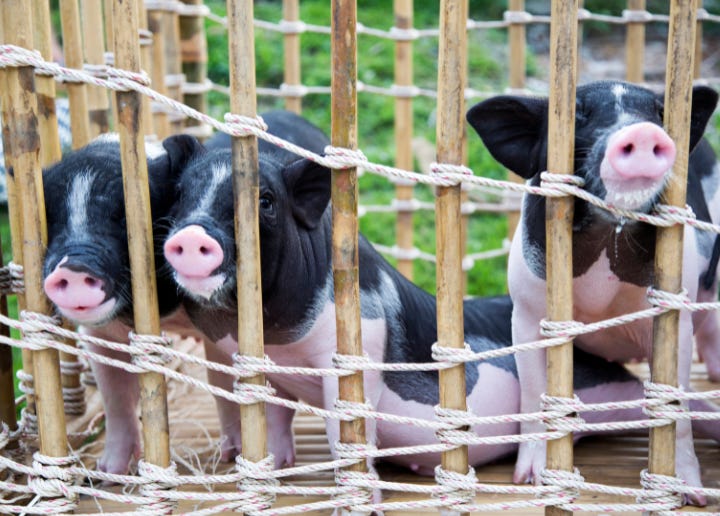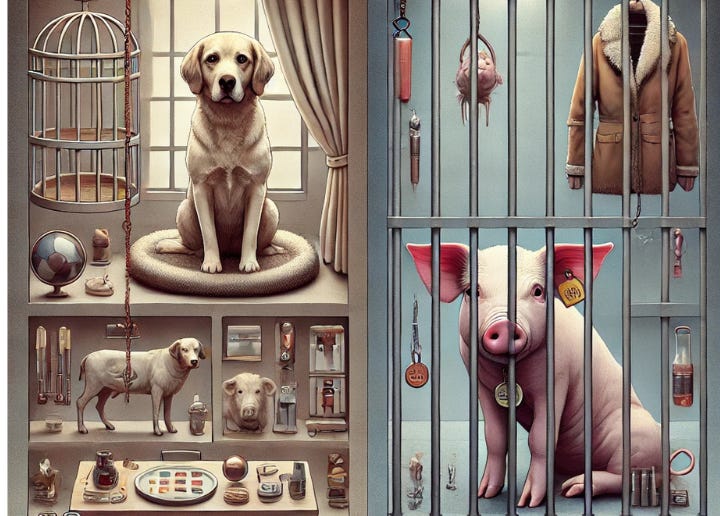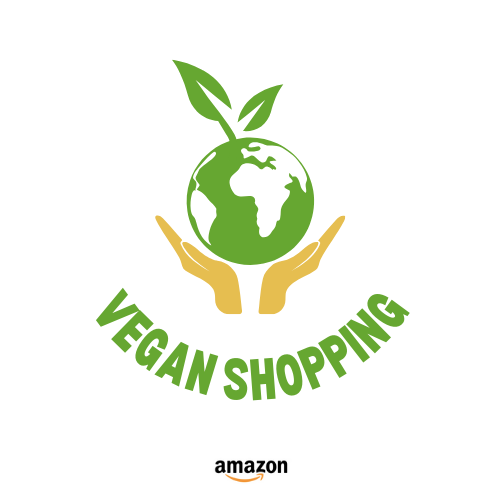Carnism is the invisible belief system that conditions people to eat certain animals while treating others as companions or wildlife. This ideology not only impacts how we think about food but also fuels the use of animals in various industries, such as clothing, entertainment, and testing. Under this system, animals become captives, exploited for human purposes, often without the public fully realizing the extent of their suffering. Understanding how carnism traps animals can shed light on the urgency of dismantling this exploitative structure.
Animals Exploited for Food
The most obvious example of animals being captives of carnism is their use in the food industry. Billions of animals, including cows, pigs, chickens, and fish, are raised each year for human consumption. These animals endure lives of confinement, abuse, and eventual slaughter, all for the sake of satisfying human dietary preferences. Factory farms, which dominate animal agriculture, prioritize profit over welfare, subjecting animals to overcrowded conditions, mutilation, and inhumane killing methods.
For instance, chickens used for egg production often live in cramped battery cages, unable to stretch their wings or perform natural behaviors. Pigs are kept in gestation crates where they can barely turn around, and cows in the dairy industry are repeatedly impregnated and separated from their calves shortly after birth. These practices are not only cruel but entirely unnecessary in a world where plant-based alternatives can provide all the nutrients humans need without causing harm to animals.
While carnism encourages society to view these animals as mere commodities, veganism challenges this by recognizing them as sentient beings deserving of compassion. The more we understand the cruelty inherent in the food system, the more we can work to dismantle it.
Exploitation for Products
Animals are also exploited in the production of various consumer goods, such as clothing and cosmetics. Leather, wool, fur, and down are commonly used in fashion, with millions of animals bred, confined, and killed each year to meet the demand for these materials. For example, leather is a byproduct of the meat industry, with cows, goats, and sheep slaughtered for their hides. Similarly, the wool industry often subjects sheep to painful procedures like mulesing, where skin around the animal's buttocks is removed without anesthesia to prevent flystrike.
In addition to textiles, animal testing continues to be a common practice in the cosmetics industry, despite advancements in cruelty-free alternatives. Rabbits, mice, and guinea pigs are often subjected to painful tests, such as having chemicals rubbed into their skin or dripped into their eyes. Many of these animals suffer and die during these experiments, which are often not even necessary, given the availability of alternative testing methods and vegan products on the market.
Entertainment and Captivity
Carnism also extends into the entertainment industry, where animals are kept in captivity and forced to perform for human amusement. Circuses, marine parks, and zoos are prime examples of how animals are treated as objects for human enjoyment rather than beings with their own needs and desires. Elephants in circuses are often trained through painful methods, such as using bullhooks, to make them perform tricks. Similarly, orcas and dolphins in marine parks live in small tanks, far removed from the expansive ocean environments they naturally inhabit.
In zoos, animals are often deprived of their natural behaviors and environments, leading to physical and psychological issues. These forms of captivity are justified by claims of conservation and education, yet many of these facilities prioritize profit over the well-being of the animals. Furthermore, the entertainment industry desensitizes the public to the suffering of animals by presenting them as spectacles rather than sentient beings deserving of respect.
Animal Testing for Science and Medicine
Another area where animals are held captive under the system of carnism is in scientific and medical testing. Millions of animals, including monkeys, dogs, and rodents, are subjected to invasive experiments each year to test the safety of products or study diseases. These tests often cause extreme pain, distress, and death, even though many of them fail to provide reliable results for human applications. Advancements in science have shown that there are better alternatives, such as in vitro testing, computer modeling, and human-patient simulators, yet the practice continues largely out of habit and economic convenience.
Dismantling Carnism and Its Impact on Animals
The exploitation of animals for food, products, entertainment, and testing is all interconnected by the ideology of carnism. This system thrives on a lack of awareness, desensitization, and normalization of animal suffering. However, as more people become informed about the realities of these industries, the call for change grows louder. Veganism offers a path forward, one that respects the lives of animals and acknowledges their right to live free from harm.
Individuals can take action by educating themselves, making conscious choices in their diet, refusing to buy products made from animals, and avoiding entertainment that exploits animals. Change can also come through supporting organizations that work to end animal cruelty, pushing for stronger animal welfare laws, and promoting alternatives to animal testing and captivity.
Conclusion
Animals remain captives of carnism across various industries, forced to endure lives of suffering for human benefit. Recognizing the impact of carnism is the first step toward dismantling it. By choosing compassion, embracing veganism, and advocating for animal rights, we can begin to break down the system that holds animals captive and work toward a more ethical world.
Sources:
Discover and share a wide range of vegan memes, from hilarious to thought-provoking, by visiting my Facebook page.
Get my new booklet ‘‘25 Vegan Myths Debunked!’’
This concise guide is invaluable for anyone curious about veganism, offering evidence-based insights and practical guidance to navigate vegan living confidently. All proceeds benefit the promotion of animal rights worldwide!
Visit My Amazon Store!
Notice: As an Amazon Associate, we earn a commission from qualifying purchases that help promote animal rights worldwide!
General Resources
Books:
Dominion: The Power of Animals in Nature and in Our Imagination by Matthew Scully
Animal Liberation by Peter Singer
Eating Animals by Jonathan Safran Foer
A Billion Hungry Mouths: Feeding the World Without Consuming the Planet by Colin Tudge
Websites and organizations:
Documentaries:
Articles:
"The Case for Animal Rights" by Tom Regan
‘‘Why We Love Dogs, Eat Pigs, and Wear Cows: An Introduction to Carnism’’ by Melanie Joy
‘‘Animal Rights: The Abolitionist Approach’’ by Gary L. Francione
‘‘Fellow Creatures: Our Obligations to the Other Animals’’ by Christine Korsgaard
Seeds of Compassion: Finding Jesus Christ in a Vegan World by Michael Corthell
Receive a single informative article daily at 12:01 AM by email. Explore my homepage with exciting vegan and plant-based news content and delightful and delicious recipes for additional updates. Stay connected to the vegan world and all it has to offer.
Visit The Vegan Project Global my Facebook page for more vegan outreach and education.
The information on this vegan/plant-based blog is for general informational purposes only. It is not intended as legal, medical, or professional advice. Readers should consult with appropriate professionals for specific advice tailored to their situation. The blog owner is not responsible for any reliance on the information herein.






